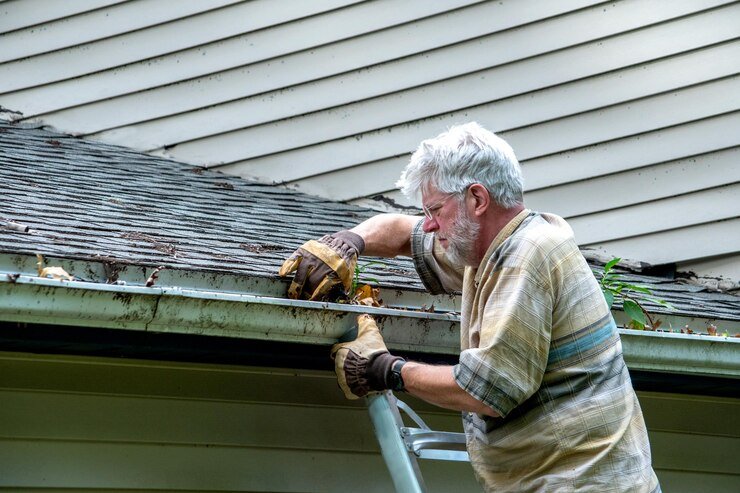Storms can cause significant damage to your home, particularly to the roof. Since the roof serves as the first line of defense against the elements, it is essential to identify signs of damage after a storm. Whether it’s a minor issue or a major repair, addressing roof damage early can prevent further complications and help preserve the safety and integrity of your home. We will explore the common signs of storm damage that may require residential roof repair by Jeff Home Improvements Inc. and guide you on effectively assessing and addressing these issues. Understanding these signs is crucial for homeowners looking to avoid costly repairs.
Visible Roof Shingles Damage
One of the most obvious signs of storm damage to a residential roof is missing or damaged shingles. Shingles protect your roof from rain, wind, and other weather elements. High winds or hail from a storm can cause shingles to crack, lift, or become completely dislodged. Inspecting the roof thoroughly after a storm and looking for any signs of missing, bent, or damaged shingles are essential. If you notice that many shingles are missing or if there are large patches where shingles have been torn away, it could indicate that a roof repair is necessary. The longer you wait to repair damaged shingles, the higher the risk of water infiltration into the roof structure could lead to further damage.
Water Stains on the Ceiling or Walls
Water stains on the ceiling or walls inside your home are often a clear sign that your roof has sustained damage during a storm. Leaks may not always be immediately visible on the roof’s surface, but the water often goes into your living spaces. If you notice any discoloration or wet spots on your ceiling or walls, it strongly indicates that your roof has suffered a breach during the storm. While a small stain might indicate a minor leak, multiple water stains or larger areas of discoloration suggest more significant damage that professional roof repair services should address. Water damage inside your home can lead to mold growth, wood rot, and further structure deterioration, so it is essential to act quickly if you spot these signs.
Loose Flashing Around Vents and Chimneys
Flashing is the metal or waterproof material used to seal the edges around roof vents, chimneys, skylights, and other protrusions to prevent water from seeping in. Flashing can become dislodged or damaged during a storm, especially one with high winds or hail. If the flashing around these areas is loose, bent, or broken, water can enter your home. Check these critical areas after a storm to ensure the flashing is intact and properly sealed. If you notice that the flashing has become separated or is showing signs of wear, it may need to be repaired or replaced to ensure your roof remains watertight. Flashing damage can often lead to leaks, which might not be immediately visible but could lead to expensive water damage repairs.
Granule Loss from Asphalt Shingles
Asphalt shingles are coated with small granules that protect from the sun’s UV rays and help to shed water. After a storm, it’s essential to check for granule loss from the shingles. You may notice granules in the gutters or downspouts, or the shingles may appear bald or thin in certain areas. Significant granule loss can compromise the shingles’ ability to perform their protective function, making your roof more vulnerable to further damage. While minor granule loss is common as shingles age, large areas of granule loss caused by hail or intense wind during a storm may require a roof repair or even a full roof replacement, depending on the severity of the damage. Regularly checking for granule loss is important in identifying storm-related damage to your roof.
Dented or Cracked Gutters and Downspouts
Gutters and downspouts are crucial for directing water away from your roof and home. If a storm has caused damage to your roof, it is also important to inspect the gutters and downspouts for dents, cracks, or misalignment. Hail or debris from the storm can cause significant damage to these components, affecting their ability to function effectively. Dents in gutters are not just cosmetic but can disrupt the water flow, causing backups or potential water damage to your roof and foundation. Cracked or misaligned downspouts may also prevent water from draining properly, increasing the risk of moisture accumulation around the base of your home. If your gutters or downspouts are damaged, it is important to address these issues promptly to avoid further complications.
Identifying storm damage to your residential roof is essential to maintaining the structural integrity of your home. You can determine whether roof repair is necessary by carefully inspecting your roof for visible signs of damage, such as missing shingles, water stains, damaged flashing, granule loss, and other issues. Addressing storm-related roof damage early can prevent more significant issues like leaks, water damage, and costly repairs. Remember that your roof is a vital part of your home’s defense against the elements, and regular checks, especially after storms, will ensure its longevity. If you are uncertain about the extent of the damage, it’s important to consult a professional to assess and repair the roof before further issues arise.
